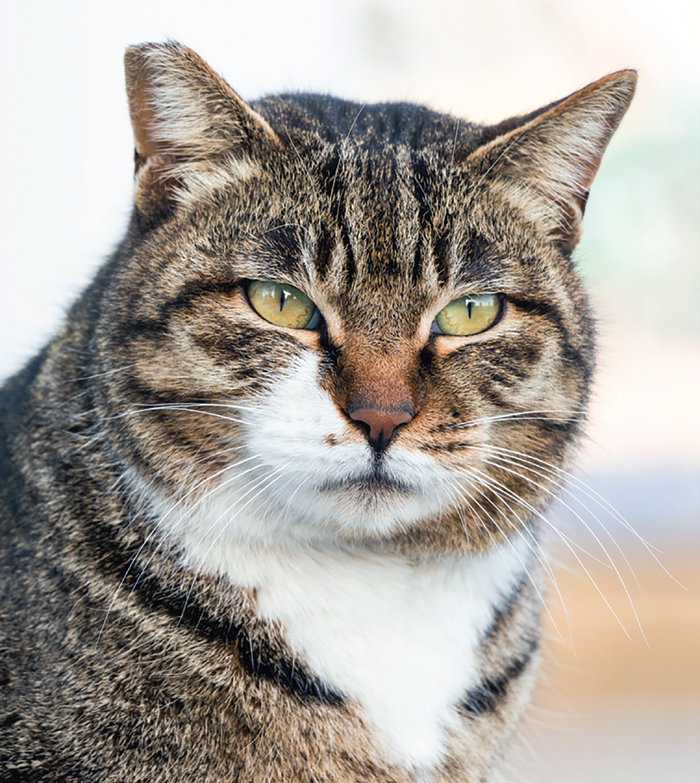Q. Our 16-year-old, neutered male cat has been hyperthyroid since 2016. He has been treated with transdermal methimazole up until recently, at which time we switched to oral methimazole.
After approximately three weeks, his bloodwork showed that his thyroid level decreased significantly, and he was exhibiting symptoms of hypothyroidism (lethargic, constipation).
I’ve tried researching hypothyroidism in cats and can’t come up with any solid answers. Is there anything that you can tell me about this condition in cats?
A. Thanks for getting in touch, and I am very sorry to hear of your boy’s problems. It is true that while we talk frequently about feline hyperthyroidism, primarily because it is very common in older cats, we rarely discuss hypothyroidism. This is because it is much less common than hyperthyroidism, and usually occurs not as a primary disease, but rather in cats that are being treated for hyperthyroidism.
Let’s start with a brief review of feline hypothyroidism.
In contrast to hyperthyroidism, a condition characterized by an overproduction of thyroid hormones by the thyroid gland, hypothyroidism refers to a condition in which the thyroid gland does not produce enough thyroid hormone. This occurs far more commonly in cats that are being treated with drugs, radiation, diet, or surgery to decrease thyroid hormone production in cases of primary hyperthyroidism (referred to as iatrogenic, caused by the therapy itself) rather than as a primary disease, although the latter has been reported.
In iatrogenic hypothyroidism, management is usually focused on either decreasing the dose of drugs that decrease thyroid hormone production (if drugs are being used to manage the disease), supplementing with synthetic thyroid hormone, or some combination of the two.
Primary hypothyroidism (i.e., that not caused by therapies intended to decrease thyroid hormone production) is rare in cats, having been reported in approximately 70 cats in the veterinary literature. Most cats with primary hypothyroidism are kittens under 4 months of age (called congenital hypothyroidism), and many of these cases may develop dwarfism. The condition can, however, be diagnosed in adult cats.
The signs of feline hypothyroidism include increased thirst and urination, unkempt haircoat, weight gain, lethargy, poor appetite, and cold intolerance. Some cats with this condition may develop an enlarged thyroid gland (goiter) that can be felt in the underside of the neck.
Primary hypothyroidism is diagnosed by documenting decreased levels of thyroid hormone and increased levels of thyroid stimulating hormone (TSH), a hormone that is produced by the pituitary gland that normally stimulates the thyroid gland to produce thyroid hormone. If treatment is required, this usually involves supplementation with synthetic thyroid hormone called L-thyroxine. Most cats diagnosed with this condition will require L-thyroxine supplementation for life.
The prognosis for adult-onset hypothyroidism is good with appropriate management. Unfortunately, kittens with congenital hypothyroidism may suffer from a variety of secondary health problems, and their prognosis is usually guarded. Some of these kittens may succumb to this condition. With ongoing research, though, it is hoped that outcomes in kittens with hypothyroidism can be improved.
I hope this helps, and please continue to work closely with your veterinarian to assure the best care for your cat.




